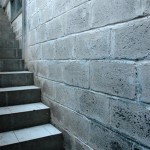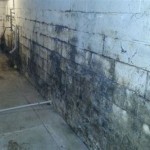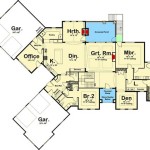How To Fix Wet Corners in a Basement
A wet corner in a basement is a common problem that can lead to mold growth, structural damage, and an unpleasant smell. Fortunately, fixing a wet corner is usually a manageable DIY project. Understanding the source of the moisture is key, as it will dictate the course of action. This article outlines the common causes of wet corners and provides a step-by-step guide for effective solutions.
Identify the Source of the Wetness
The first step in fixing a wet corner is accurately identifying the source of the moisture. Observe the corner carefully and consider the following factors:
- Exterior Drainage: Poorly functioning gutters or downspouts can cause water to pool near the foundation, seeping into the basement walls.
- Foundation Cracks: Cracks in the foundation can allow water to penetrate, creating wet corners.
- Hydrostatic Pressure: In areas with high groundwater levels, water pressure can force its way into the basement walls, leading to wet corners.
- Interior Plumbing Leaks: Leaky pipes or fixtures can cause localized wetness in specific areas of the basement.
- Condensation: Moisture in the air can condense on cold surfaces, creating wetness, especially in poorly ventilated basements.
Once the source of the wetness is identified, the appropriate course of action can be taken.
Addressing Exterior Drainage Issues
If the wet corner is caused by poor exterior drainage, the following steps can be taken:
- Clean Gutters and Downspouts: Regularly clean gutters and downspouts to ensure proper water flow.
- Extend Downspouts: Ensure that downspouts are extended away from the foundation, directing water away from the basement walls.
- Install French Drains: If the problem persists, installing a French drain around the foundation perimeter can help divert water away from the basement.
- Grade the Yard: Ensure that the ground slopes away from the foundation, preventing water from pooling near the walls.
By addressing exterior drainage issues, you can effectively prevent water from entering the basement.
Repairing Foundation Cracks
If foundation cracks are contributing to the wet corner, it is crucial to have them repaired by a professional. The following steps are commonly involved:
- Clean the Crack: The crack should be cleaned thoroughly to remove debris and loose material.
- Apply Sealant: A flexible sealant, such as polyurethane or epoxy, is applied to the crack to prevent further water penetration.
- Install Waterproof Membrane: In some cases, a waterproof membrane may be applied to the entire foundation wall to create a barrier against moisture.
Repairing foundation cracks requires specialized knowledge and equipment. Consulting a qualified foundation repair specialist is essential.
Managing Hydrostatic Pressure
If hydrostatic pressure is the culprit behind the wet corner, a solution may be more complex and require a professional evaluation. However, there are some measures that can be taken to mitigate the problem:
- Install a Sump Pump: A sump pump collects groundwater that enters the basement and pumps it away from the foundation.
- Apply Waterproofing Coatings: Applying a waterproofing coating to the basement walls can create a barrier against hydrostatic pressure.
- Install Exterior Drainage Systems: Installing exterior drainage systems, such as French drains or perimeter drains, can redirect groundwater away from the foundation.
These solutions can help manage hydrostatic pressure and prevent water from entering the basement.
Addressing Interior Plumbing Leaks
If the wet corner is caused by an interior plumbing leak, the following steps should be taken:
- Identify the Leak: Carefully inspect plumbing fixtures and pipes for leaks or signs of moisture.
- Repair the Leak: Contact a plumber to repair or replace leaking pipes or fixtures.
- Dry the Area: After the leak is repaired, thoroughly dry the wet area to prevent mold growth.
Addressing interior plumbing leaks promptly is essential to prevent further damage and health hazards.
Controlling Condensation
If condensation is causing the wet corner, improving ventilation is crucial. Consider these measures:
- Install a Dehumidifier: A dehumidifier removes excess moisture from the air, reducing condensation.
- Increase Air Circulation: Improve air circulation in the basement by opening windows, using fans, or installing a ventilation system.
- Insulate Cold Surfaces: Insulating cold surfaces, such as walls and floors, can prevent condensation from forming.
Creating a drier and more ventilated environment in the basement will help minimize condensation and prevent wet corners.

5 Signs Of A Wet Basement Problem Waterproof Com

How Do I Fix Damp Or Wet Corners In My Basement

4 Sure Ways To Fix Wet Basements Ohio State Waterproofing Macedonia Oh

Exterior Basement Waterproofing Or Interior

6 Causes Of Basement Moisture How To Fix Them

How To Waterproof A Basement That Is Flooded Standard Water

Wet Basement Diy Repair Guide Radonseal

Connecticut Basement Systems Waterproofing Photo Album Water Damaged Basements In

12 Tips For Fixing A Leaky Basement Family Handyman

Help My Basement Leaks When It Rains News And Events For Systems Inc








